Owl Figure Item Number: 2731/28 from the MOA: University of British Columbia
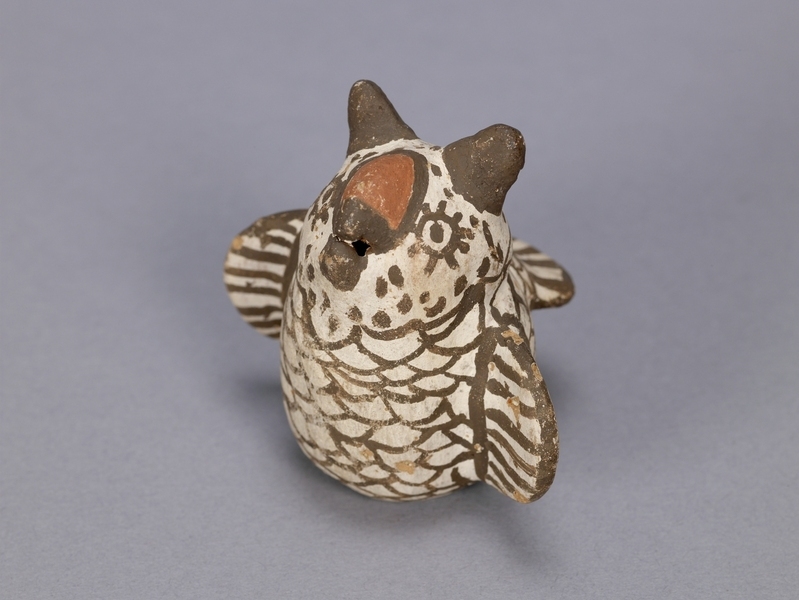
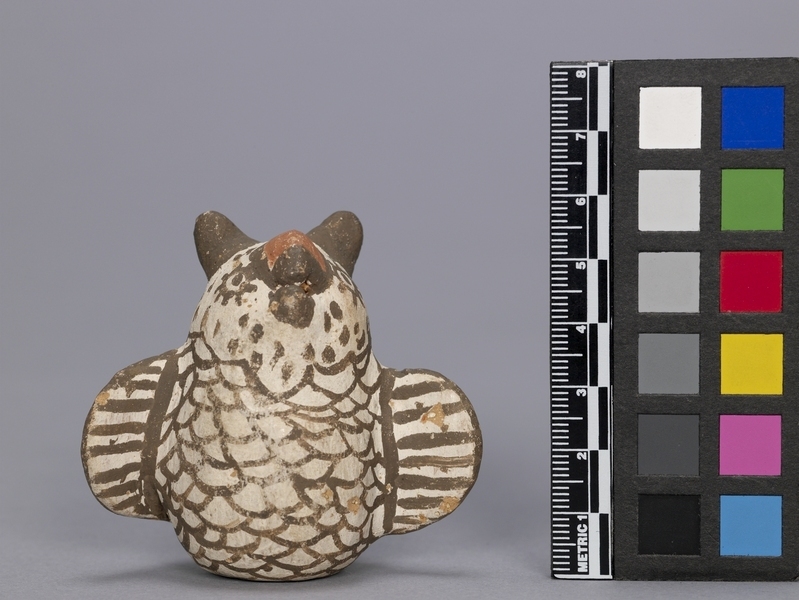
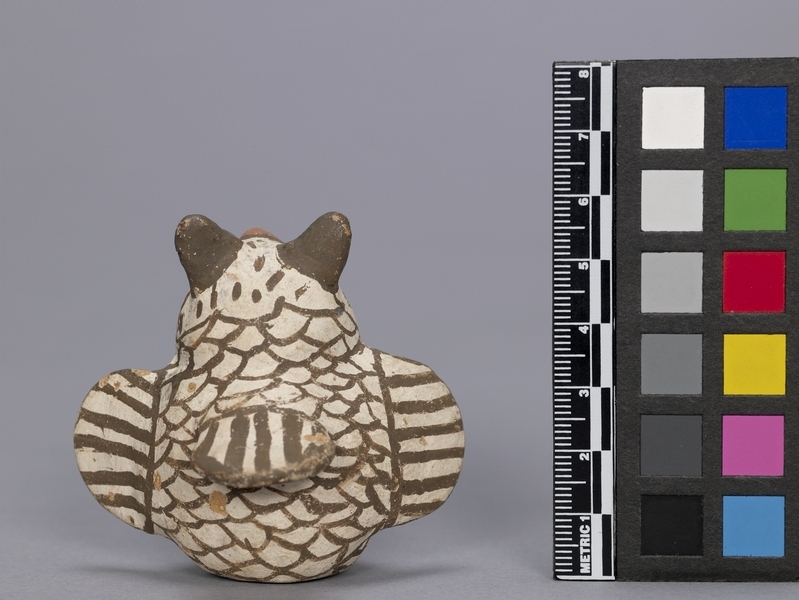
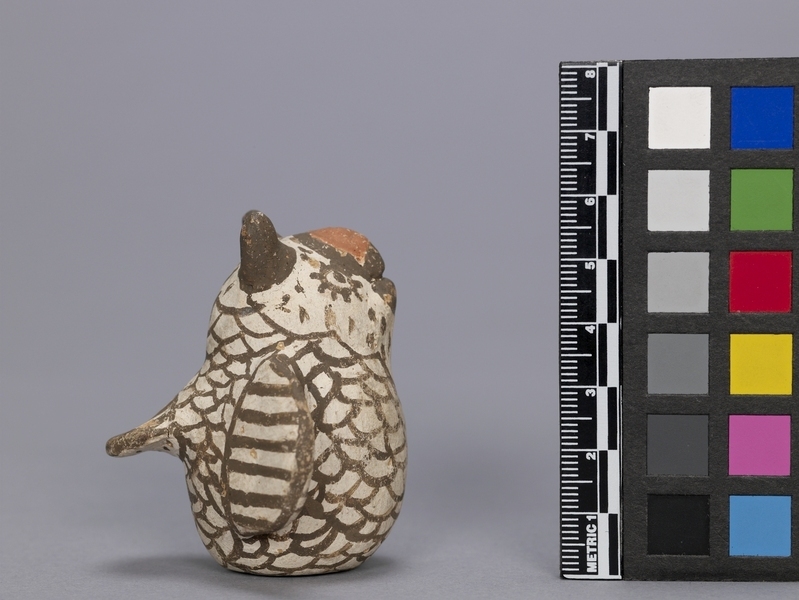
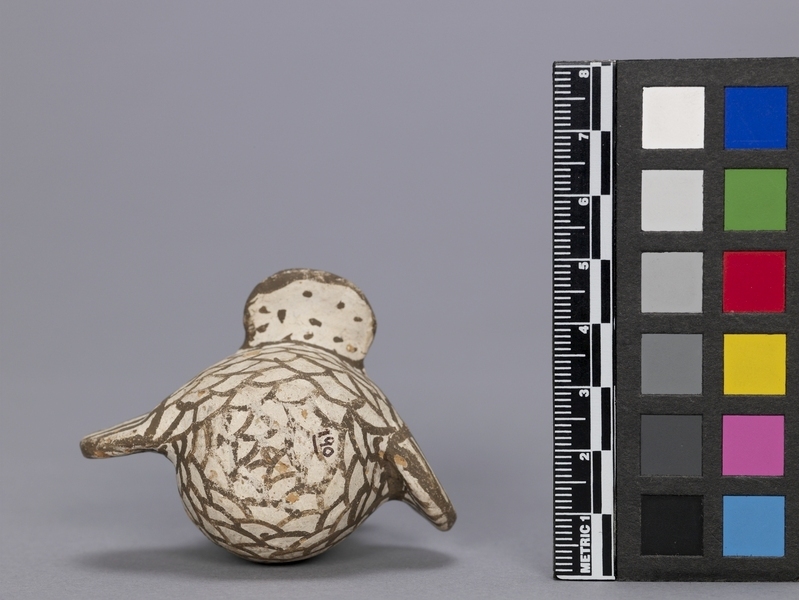
Description
Hand coiled orange clay pottery owl. Hand painted details are mostly brown (top of beak is dark orange) over a cream slipped background. Stylized feather pattern covers base and body up to outline of spotted head. Extended vertical wings are striped both sides while the tail is striped on top and spotted on bottom. Ears are large rounded cones, slightly flattened and the split two-tone beak rises slightly from the face. Eyes are small with nine short lashes.
Narrative
Pottery owls became important tourist items when the railroad and then Route 66 allowed for large numbers of tourists to travel to the Southwest. This collection of 192 Zuni pottery owls includes examples from before 1900 through 2006. Zuni potters continue to make owls and family traditions in the medium continue. While many younger potters are innovating, the owls are distinctly Zuni.
Iconographic Meaning
In traditional Zuni lore, the owl is considered a wise guardian and protector. An owl’s ability to see at night means that it sees what others cannot, giving it understanding of the spiritual and physical world.
Item History
- Made in New Mexico, USA before 1959
- Collected in Santa Fe, New Mexico, USA during July 2008
- Owned by Daniel Ma before February 24, 2009
- Owned by David Evans between July 22, 2008 and February 24, 2009
- Received from David Evans (Donor) and Daniel Ma (Donor) on February 24, 2009
What
Who
- Culture
- Zuni
- Previous Owner
- Daniel Ma and David Evans
- Received from
- David Evans (Donor) and Daniel Ma (Donor)
Where
- Holding Institution
- MOA: University of British Columbia
- Made in
- New Mexico, USA
- Collected in
- Santa Fe, New Mexico, USA
When
- Creation Date
- before 1959
- Collection Date
- during July 2008
- Ownership Date
- before February 24, 2009 and between July 22, 2008 and February 24, 2009
- Acquisition Date
- on February 24, 2009
Other
- Item Classes
- ceramics
- Condition
- fair
- Accession Number
- 2731/0028